Unusual museums to entertain the inquiring mind
- Published
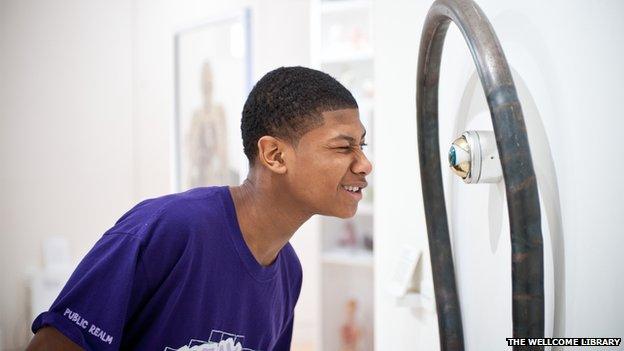
The weird and wonderful world of medicine meets art at the Wellcome Collection
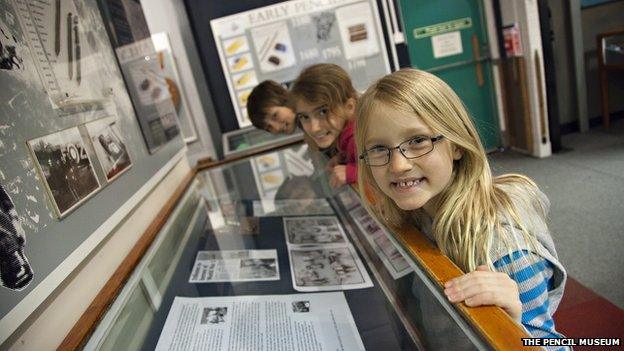
The Pencil Museum tells the story of the discovery of graphite through to modern day pencils and also provides art workshops
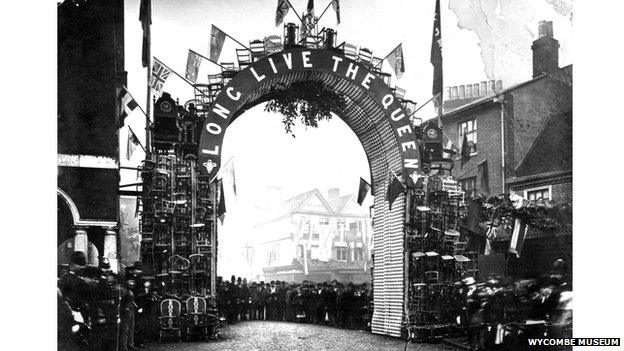
Chairs were so important to the people of High Wycombe that they constructed an arch for Queen Victoria - it was out of this love that the Chair Museum grew

The British Postal Museum is currently just a store for its vehicles and post boxes but there are ambitious plans to build a full time display
The UK has heritage to rival any country in the world. From Stonehenge to the Tate Modern, kings in car parks to Hadrian's Wall, it has visitor attractions to make tourists drool - but it also has the weather.
This Easter weekend is expected to be a typical English washout, so here's a selection of some of the finest odd examples of museums and collections on offer.
On the face of it, some might appear to a few to be pointless collections of strange memorabilia, but more often than not there is an important and interesting tale behind them.
The British Postal Museum and Archive

Most of the British Postal Museum's items remain in storage but there are ambitious plans to put them on display
In a building on the outskirts of London in Debden, Essex, external, sits a fine collection of postal vehicles and postboxes.
Although it is popular enough on its own, there is also an archive.
Currently housed in central London, it offers an almost unrivalled collection of items reflecting Britain's social history from the 17th Century to the present day.
There are millions of employment records for family historians, every stamp ever printed, and some which never made it, blunderbusses used to protect mail coaches and the full investigation into the Great Train Robbery.
Most of this is hidden away but there are ambitious plans to open a new Postal Museum, external in London.
John Taylor & Co - the Loughborough Bell Foundry
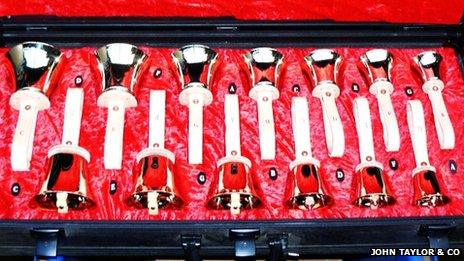
John Taylor moved his bell foundry to Loughborough from Oxford in the 19th Century
John Taylor & Co, external is one of the last two bell foundries left in the country and its museum is a testament to the history of a place which has cast hundreds of bells which still ring around the world.
Visitors to the 170-year-old company can peek through the windows to see staff at work, but for the full experience of a boiling hot working foundry, a tour can be booked.
Bubblecar Museum
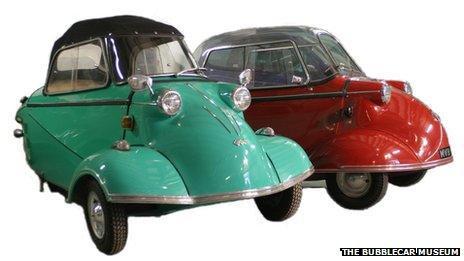
The museum offers "a trip down memory lane"
The The Bubblecar Museum, external grew out of one couple's love of the micro-car and has now expanded to include objects from everyday life in the 1950s.
Paula and Mike Cooper set up the museum at their home in Langrick, just outside Boston and a couple of miles down the road from New York, Lincolnshire.
Paula said: "There was a lot of talk among collectors and enthusiasts about setting up a museum to the bubble car. One year I said 'let's just do it, stop talking about it and do it'.
"It's now a trip down motoring memory lane. It is motoring history but from living memory. People can remember these things. We often hear people say 'oh it looks just like grandma's house' and that's just lovely."
The Chair Museum, High Wycombe

Wycombe was synonymous with chairs for many years - so much so an arch made of chairs was erected for a visit by Queen Victoria
Its real name is Wycombe Museum, external but it is known by many as the Chair Museum.
It houses Britain's only specialist display dedicated to chairs and the importance they have played in Wycombe's history as well as the wider country.
Chairs such as the deportment chair for children, which forced youngsters to sit with a straight back, give a better understanding of the Victorians.
Dr Catherine Grigg, collections and interpretation officer, said: "Chairs provide an insight into social history. It tells us a lot about how people lived their lives."
The Wellcome Collection

The Wellcome Collection houses two permanent displays on Medicine Man and Medicine Now
A collection "bringing art, science and medicine together, quirky and unusual is what the Wellcome Collection, external does", says the museum's spokesman.
It bills itself as the destination for the incurably curious and puts on temporary exhibitions covering everything from flesh to war, dreaming to dirt.
And its permanent displays include thousands of artefacts amassed by pharmaceutical entrepreneur Sir Henry Wellcome.
Within its collection, the Trust houses Napoleon Bonaparte's toothbrush, Charles Darwin's skull-topped walking cane, an elaborately decorated torture chair made of blades, a centuries old mummified man from Peru and the genome bookcase holding books containing the entire printout of the human reference genome.
The Pencil Museum
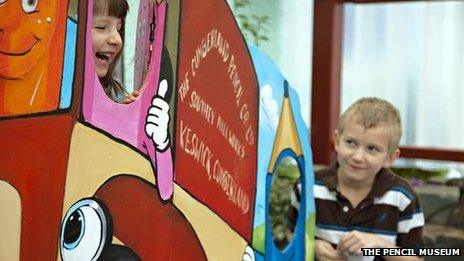
As well as telling the history of pencils, the museum offers a wide range of workshops for young and old to enjoy
No feature about unusual exhibits would be complete without mentioning Keswick's Pencil Museum.
It tells the story of the writing tool from its invention by shepherds in the 17th Century to the modern day art equipment.
Invented nearby, the site is the only graphite mine in the country and has been producing pencils for 180 years.
During WWII the factory, which has since moved to Workington, made top secret pencils for Lancaster bomber crewmen with a hidden map and compass.
Museum manager Alex Farthing said it was "one of 50 places you have to see before you die".
She added: "We get a lot of people coming who visited when we first started in the 1980s and 90s and are now bringing their children, reliving their childhood."
- Published1 February 2013
- Published30 September 2012
- Published17 March 2012
- Published21 July 2011